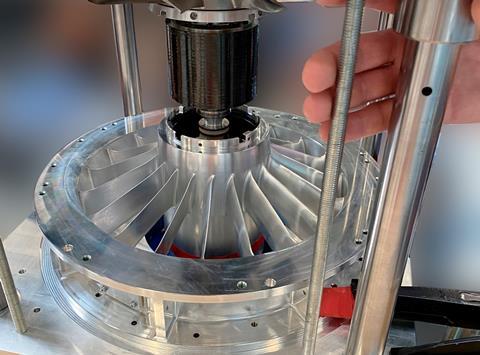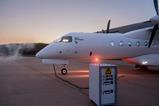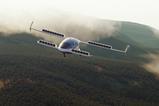Lilium has begun assembly of the propulsion system for its electric vertical take-off and landing Lilium Jet.
In the initial phase, rotating parts – including the shaft, magnets and titanium compressor fan – are assembled and mated with static components such as the electric motor stator and guide vanes.

Once complete these are then integrated into the engine. Each Lilium Jet will have 30 of the ducted electric vectored thrust engines – 18 on the wing and 12 on the forward canard. They are a single-stage design with a variable nozzle.
Integration of the engines into the jet’s propulsion mounting system – each sits on an individual flap structure – will take place later this year.
The start of engine assembly follows testing of subsystem components including the Denso-Honeywell 4kg (8.8lb) electric motor, SKF bearings and Aeronamic-built titanium compressor fan.
Lilium earlier this year also completed trials of a full-size prototype fan and stator at a site in Germany.
Further testing of the prototype 100kW electric motor is ongoing to validate its mechanical, electrical, and thermal performance.
“The start of propulsion assembly represents a significant step towards industrialising the Lilium Jet,” says Yves Yemsi, Lilium chief operating officer.
“In the coming weeks, we will be systematically working towards validating our manufacturing capabilities and preparing to deliver the propulsion units for initial aircraft integration and type-certification testing.”
Lilium aims to fly the initial production-conforming prototype next year, leading to certification in 2025.
The German company recently announced that manufacture of the first fuselage was under way at partner Aciturri’s site in Spain.































